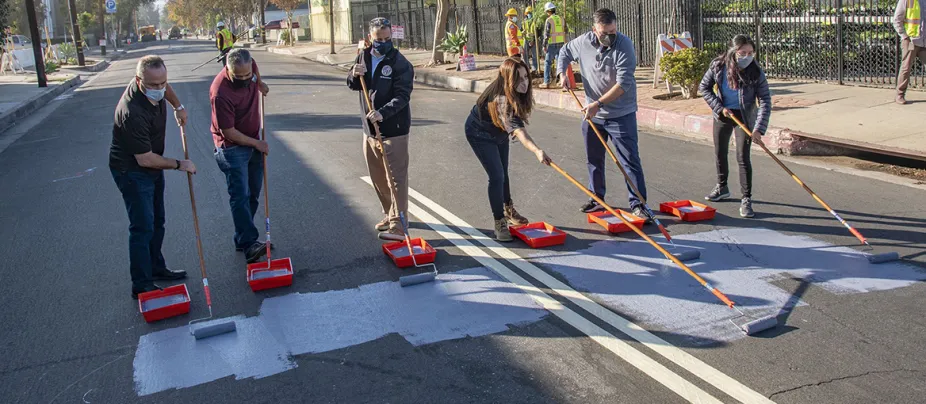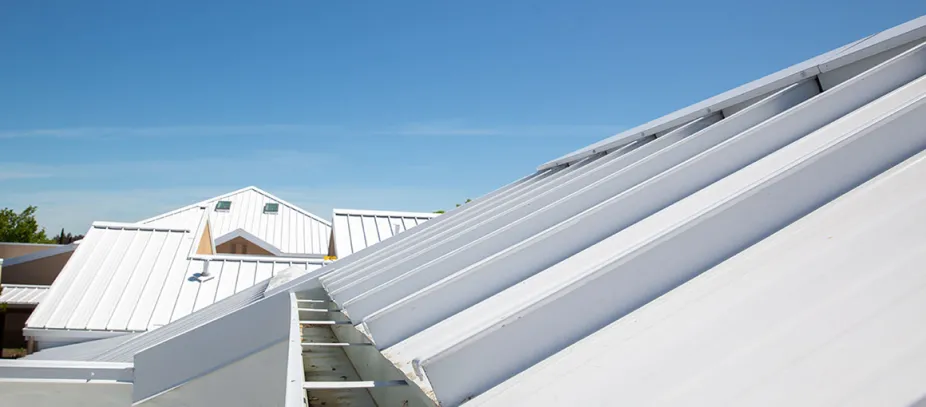Heat in Cities
A summer day that’s warm in the countryside can be unbearably hot in a nearby city. That’s because the buildings and pavement in cities absorb lots of sunlight. This makes cities like islands of heat. The countryside is cooled by water evaporating from lakes and rivers and water released by the plants in forests and fields. Cities with few plants, lakes, and rivers are not cooled very much by evaporation.
This video is a part of Animated Atmosphere, a suite of short videos produced by the UCAR Center for Science Education with FableVision Studios.
People are taking action to help keep cities cooler.
How can we reduce heat in cities? Below are pictures of people taking action to help. In some cities, streets and roofs are being painted with special paint that reflects sunshine. Plants are added to the rooftops, and trees are planted near streets to help keep cities cool.

People in Los Angeles, California, are painting streets with reflective paint to help keep the city cool.
Credit: Los Angeles Street Services

Adding plants to rooftops insulates buildings and helps keep the air cool.
Arlington County on Flickr/CC BY-SA 2.0

These white roofs reflect sunshine, which helps keep this California neighborhood cool.
Credit: California Energy Commission

People are planting trees to help keep Commerce City, Colorado, cool.
Credit: Groundwork Denver